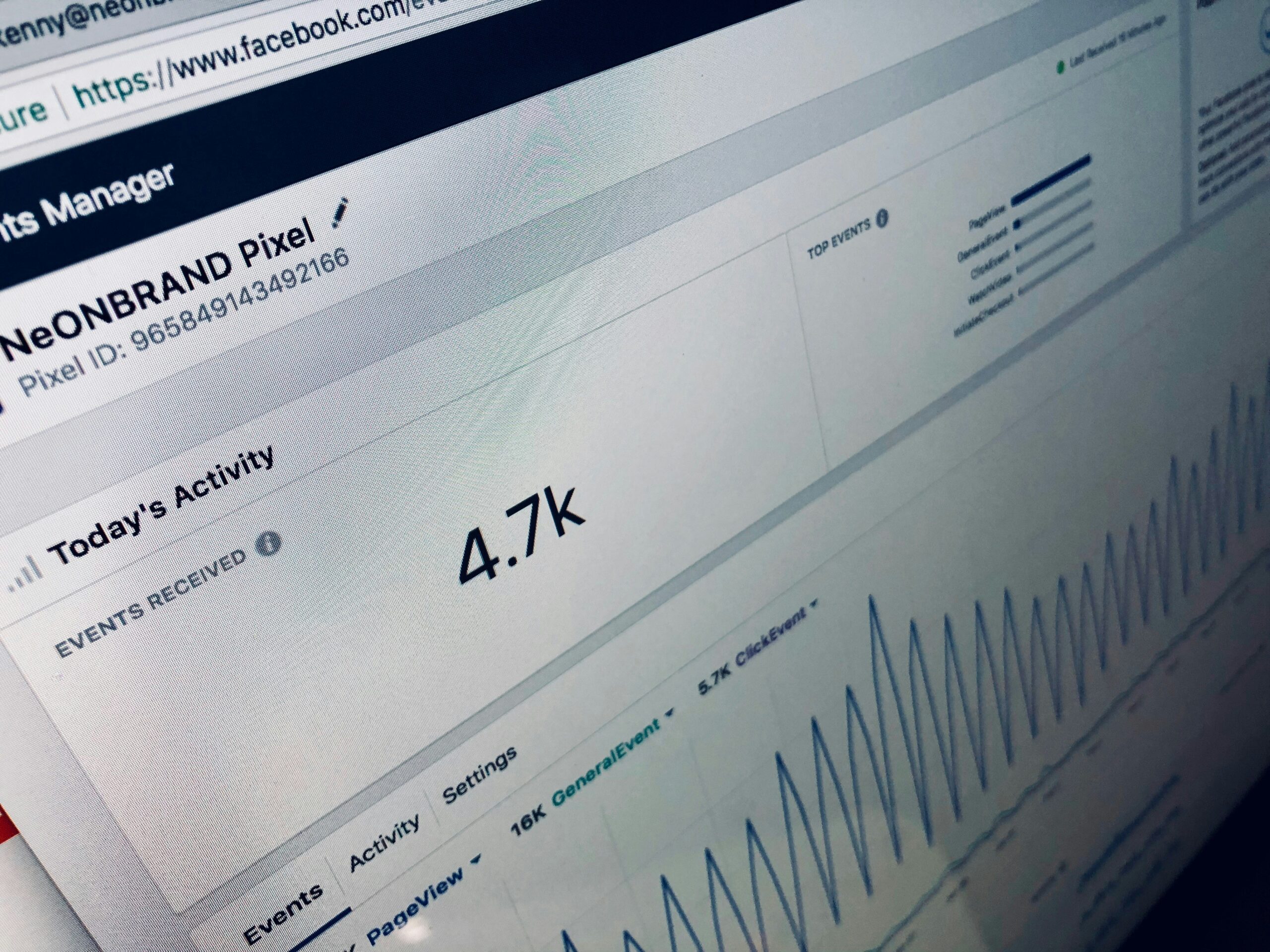In today’s rapidly evolving market environments, acquiring customers is no longer about throwing spaghetti at the wall and seeing what sticks. Instead, businesses that harness data-driven customer acquisition methods enjoy a competitive edge through precise targeting, effective personalization, and meaningful engagement. Leveraging detailed customer information and advanced analytics, companies now optimize each touchpoint—from influencer marketing and content marketing to social media engagement and strategic onboarding—to build brand awareness, reduce customer attrition, and boost overall customer lifetime value. This comprehensive article explains how to use data as a strategic asset to form better customer personas, refine segmentation, and ultimately drive acquisition tactics that balance efficiency with business scalability. The purpose here is to outline actionable strategies supported by real-world examples and recent peer-reviewed studies showing measurable improvements in customer acquisition costs and retention rates. By tapping into machine learning, predictive analytics, and a deep understanding of consumer behavior, businesses can design an acquisition funnel that not only attracts leads but also nurtures them into loyal customers. Let us explore these methodologies through specific headings that outline every critical step in this data-led journey.
The Foundation of Insightful Customer Acquisition
Effective customer acquisition begins with a solid foundation of insight and structured data interpretation. The very first step in this process is to define the customer acquisition process using a data-driven approach that integrates influencer marketing, customer segmentation, and precision analytics. Businesses use firmographics and psychographics to build detailed customer personas, thereby transforming raw consumer data into actionable intelligence. The initial insights derived from data analysis are invaluable—they help organizations understand key behaviors, preferences, and touchpoints at critical moments in the customer journey.
Defining Data-Driven Customer Acquisition Methods

Data-driven customer acquisition methods are defined by the collection of quantitative and qualitative customer data that illuminates patterns and trends. With advancements in machine learning, companies can now process billions of data points to reveal hidden behavioral indicators. This method relies on both direct customer feedback and aggregated online interactions to develop targeted advertising strategies, ranging from personalized email campaigns to tailored landing pages that speak directly to the consumer’s needs. Such approaches ensure that every campaign resonates deeply, effectively increasing conversion rates and minimizing wasted spend.
The Significance of Deep Customer Understanding for Growth
Deep customer understanding is not merely an academic exercise; it is a dynamic process that informs every interaction. Companies that invest in detailed data segmentation and behavioral analysis see improved marketing efficiency. By integrating user experience (UX) studies and tracking conversion data points, businesses can adapt their acquisition campaigns on the fly. When organizations have granular insights into customer behavior—for instance, through the use of customer data platforms (CDPs)—they are well-positioned to identify the true drivers of engagement and loyalty. This level of understanding results in marketing messages that are reliably aligned with consumer expectations, reducing churn rate and strengthening brand loyalty.
Connecting Customer Knowledge to Effective Acquisition Tactics
Customer knowledge, when connected to acquisition tactics, creates an interdependent system that facilitates timely and contextually relevant messages. By leveraging analytics tools and personalized content, companies can schedule communication touchpoints that strike at the right moment in the customer journey. Such tactics include precision email marketing and tailored social media advertising, both driven by segmented customer lists. For example, analytics might reveal that a specific group of customers responds better to video content. This finding can reallocate budget to video production and digital advertising on platforms where that group is active. This strategy not only improves customer engagement but also boosts overall conversion rates by ensuring that each prospect’s journey is addressed with bespoke content.
Building a Strategy Around Information-Powered Prospecting
To truly benefit from data-driven acquisition, a company must build its strategy around the notion of information-powered prospecting. This strategy involves systematic testing and optimization using A/B testing, predictive analytics, and continuous monitoring of key performance metrics. Prospecting methods evolve from conventional mass-marketing to highly segmented approaches where each customer segment is approached individually. In this way, machine learning algorithms sift through enormous datasets to pinpoint potential customer segments that are most likely to convert. This level of detail helps organizations shape not only their marketing messages but also the incentives and promotions offered during the acquisition phase.
Gathering and Managing Valuable Customer Information

The process of gathering and managing customer information is a critical pillar of any effective acquisition strategy. Accurate and timely customer data fuels models that predict behavior, allowing companies to segment their audience and target potential customers with unprecedented precision. Modern data management systems, including customer data platforms (CDPs) and advanced analytics solutions, collect and correlate data from various sources such as social media interactions, website visits, and mobile app usage. This aggregation process is essential in creating robust customer profiles that not only inform acquisition strategies but also support lead nurturing and long-term customer retention.
Identifying Critical Data Points for Acquisition Success
Critical data points for acquisition success typically combine demographic, behavioral, and transactional information. Demographic factors can include age, location, and income level, while behavioral data encompasses online activity, purchasing frequency, and interaction patterns across multiple channels. For example, key performance indicators (KPIs) such as click-through rates on landing pages, conversion rates, and average time on site provide quantifiable measures of customer engagement. Identifying such critical data points allows companies to deploy more efficient, targeted campaigns.
Practical Techniques for Collecting Actionable Customer Data
There are multiple practical techniques for collecting actionable customer data, ranging from online surveys and focus groups to digital tracking and CRM integration. One effective method is using a combination of first-party data collection methods, such as interactive website widgets and in-app behaviors, along with third-party analytics services. Companies frequently leverage competitor tools like Google Analytics, social media analytics, and email marketing platforms to ensure that the data collected is both comprehensive and actionable. Techniques such as sentiment analysis and real-time feedback mechanisms also provide immediate insights into customer preferences and pain points. Each technique, when executed well, contributes to a more vibrant and dynamic understanding of the customer journey.
Selecting Tools for Efficient Customer Data Aggregation
When it comes to selecting tools for customer data aggregation, businesses must consider factors like scalability, integration capabilities, and level of automation. Modern customer data platforms (CDPs) offer unified dashboards that help integrate data from various sources such as mobile apps, websites, emails, and social media channels. These tools not only consolidate data but also employ advanced machine learning algorithms that can automate segmentation and predictive analytics. Tools such as HubSpot, Marketo, and Salesforce have established themselves as core components of many customer acquisition strategies by enabling real-time data processing and actionable insights. The investment in these tools is justified by the resultant clarity and efficiency in handling vast data streams that drive robust lead generation initiatives.
Maintaining High Standards of Data Integrity and Relevance
Data integrity and relevance are the cornerstones of a successful data-driven customer acquisition strategy. It is essential that the data collected is accurate, up-to-date, and free from duplication or errors. Regular audits and cross-referencing techniques should be employed to verify the reliability of information. Furthermore, businesses must continuously update their data sources to adapt to changing consumer behaviors and market conditions. This means that robust data hygiene protocols, including routine cleansing, validation checks, and automated error detection, are paramount. Maintaining high data quality directly impacts the effectiveness of targeting and segmentation efforts, ensuring that every acquisition tactic is based on reliable customer insights.
Ethical Considerations in Customer Data Handling
Alongside technical challenges, ethical considerations remain paramount in the management of customer information. With the introduction of regulations such as GDPR, CCPA, and other privacy standards, companies must handle data with the utmost responsibility and transparency. Ethical data handling involves explicit customer consent, secure storage, and clear communication regarding data usage policies. Businesses that prioritize privacy and data protection not only comply with legal standards but also build trust with their customers, a critical component for long-term customer retention. This trust is further reinforced when customers are provided with options to control their personal data, thereby ensuring that the acquisition process remains customer-centric.
Transforming Raw Data Into Actionable Acquisition Intelligence

Raw data, in its unrefined form, is often overwhelming and difficult to analyze. Transforming this raw data into actionable acquisition intelligence is critical for making informed decisions that lead to meaningful customer acquisition outcomes. By utilizing advanced data analysis and segmentation techniques, companies can convert digital footprints into insights that guide personalized marketing strategies. Actionable data intelligence not only informs which customer segments to prioritize but also helps in crafting targeted messages that resonate with each specific audience. This transformation is achieved through a combination of statistical analysis, machine learning, and predictive modeling, ensuring that even subtle trends are detected and leveraged.
Applying Data Analysis to Refine Acquisition Strategies
Data analysis is the process of sifting through raw customer information to identify trends, correlations, and patterns that directly impact acquisition outcomes. Companies can use regression analysis, clustering, and data mining techniques to understand which marketing touchpoints yield the highest conversion rates. For example, an analysis might reveal that website visitors who spend more than three minutes browsing a particular product page are 30% more likely to convert. These insights allow for refinements in acquisition strategies whereby resources are allocated more efficiently and marketing messages are tailored to the identified needs and preferences. Such methods ensure continuous improvement, allowing companies to adapt in real-time to the dynamic marketplace.
Segmenting Your Audience for Targeted Acquisition Efforts
Audience segmentation divides the customer base into discrete groups based on shared characteristics, behaviors, and needs. This segmentation is critical because it enables personalized marketing efforts rather than a one-size-fits-all approach. Advanced segmentation strategies may include dividing audiences based on past purchase behaviors, online engagement scores, and demographic factors. Using predictive analytics, businesses can forecast future buying behaviors for each segment. For example, a leading SaaS company recently reported a 25% increase in lead conversion by segmenting prospective customers into micro-segments based on usage patterns and engagement with their email marketing campaigns. This tailored approach results in customized content that addresses individual pain points and preferences, ultimately leading to improved acquisition outcomes.
Personalizing Outreach Through Data-Informed Understanding
Once audience segments have been clearly defined, the next step is to personalize outreach to each segment. Data-informed personalization involves tailoring messages, offers, and content based on the specific characteristics and behaviors of each customer segment. For instance, personalization may include adaptive email copy that adjusts according to the customer’s recent interaction history or dynamic website content that changes based on the visitor’s persona. This significant uptick in effectiveness highlights the importance of leveraging individual customer data to craft precise, highly engaging messages that resonate and drive desired actions.
Using Predictive Analytics to Anticipate Customer Needs
Predictive analytics represents the cutting edge of transforming data into actionable intelligence. By examining historical data, predictive models can anticipate future customer behaviors and preferences. These models use algorithms that forecast not only conversion probabilities but also potential churn rates, thereby enabling proactive retention strategies. This forecasting ability allows companies to preemptively address potential issues before they escalate, ensuring that every customer journey is optimized for maximum retention and satisfaction.
Gaining Deeper Understanding Through Customer Behavior Analysis
Detailed customer behavior analysis involves monitoring and interpreting every interaction a customer has with a brand—be it through social media engagements, website navigation, or direct purchase behavior. This analysis provides a rich narrative of the customer journey, allowing businesses to identify specific moments where intervention can significantly enhance engagement. By linking behavior analysis with segmentation, companies uncover nuanced differences between customer groups. For example, one company observed that users who repeatedly interacted with brand touchpoints on mobile apps showed 20% higher purchase intent compared to those engaging solely on desktop platforms. Such deep insights drive the formulation of acquisition strategies that are both timely and tailored, ensuring that every personalized contact is relevant and impactful.
Executing Potent Data-Driven Customer Acquisition Methods

With actionable acquisition intelligence in hand, the execution of customer acquisition methods becomes sharply focused and measurable. Data-driven acquisition not only increases the efficiency of lead generation but also aligns every stage of the funnel with precise customer insights. By integrating various digital marketing channels such as targeted advertising, content marketing, precision email campaigns, and social media analytics, companies can ensure that each outreach effort is as impactful as possible. These methods require continuous optimization and testing in order to stay ahead of competitors and rapidly changing market conditions. Each tactic, whether it involves influencer marketing or leveraging customer data platforms, is validated through ongoing performance tracking and A/B testing.
Developing Targeted Advertising Using Customer Profiles
Targeted advertising is crafted directly from detailed customer profiles that include demographic, psychographic, and behavioral data. This method involves using sophisticated tools to create ads that speak specifically to each customer segment, making every interaction highly relevant. For example, digital ad platforms now allow for the micro-targeting of audiences based on recent online activities and expressed interests. Research data reveals that advertisements based on precise customer profiles have up to a 40% higher click-through rate compared to generic ads. The process involves integrating real-time data from customer interactions to continuously update and refine ad targeting, ensuring that every dollar spent on advertising translates directly into value. The success of this approach is highly dependent on secure data pipelines and real-time analytics systems powered by machine learning.
Powering Content Strategies With Audience Data
Content strategies deeply informed by audience data are essential to drive organic traffic and build trust with potential customers. By understanding which topics resonate most with specific segments, companies can create highly engaging blog posts, social media updates, and video content that are designed to educate, entertain, and convert. For example, a case study of a leading SaaS firm showed that leveraging customer segmentation to tailor content increased their organic search traffic by 35% in just six months. By aligning content topics with the interests of each customer persona, organizations enhance their brand awareness, improve search engine optimization (SEO), and create a seamless customer journey from awareness to conversion. Detailed topic mapping and keyword optimization are supported by data analytics tools that continuously gauge audience engagement metrics.
Employing Precision Email Campaigns Based on Insights
Precision email campaigns represent one of the most actionable tactics in data-driven acquisition strategies. These campaigns are built on meticulously segmented mailing lists and utilize adaptive content that dynamically changes based on customer behavior and preferences. Studies indicate that personalized emails with dynamic content yield open rates that are 29% higher than non-personalized emails. By integrating email marketing software with customer data platforms, marketers can deliver real-time messaging that responds to recent user activity. For example, if a customer abandons a shopping cart, an automated email reminder tailored to that user’s past behavior is triggered, often resulting in immediate conversion. The precision of these campaigns is further enhanced by A/B testing subject lines, content variations, and call-to-action (CTA) placements, ensuring that every email sent is optimized for performance.
Continuously Improving Results With A/B Testing
A/B testing (or split testing) is integral to refining customer acquisition strategies. This method involves testing different variations of digital assets—ranging from landing pages and ads to email copy and website layouts—to determine which version performs better. Continuous improvement through A/B testing allows companies to optimize conversion rates by identifying and implementing the best-performing elements. For instance, a well-documented case study in digital marketing demonstrated that iterative A/B testing led to a 22% increase in conversion rates over a six-month period. The insights gained from these tests inform further refinements and strategic shifts while minimizing the risk associated with untested assumptions. By applying rigorous testing methodologies, marketing teams become more agile and responsive, allowing for real-time adjustments in campaigns that effectively lower customer acquisition costs.
Applying Social Media Analytics for New Customer Attraction
Social media analytics provide critical insights into the behavior and preferences of potential customers, enabling brands to target new audiences more effectively. By tracking metrics such as engagement rates, sentiment scores, and sharing behaviors, companies can identify which social media platforms and content types drive the best results for customer acquisition. For example, a recent analysis showed that targeted social media campaigns using detailed customer profiles resulted in a 33% increase in click-through rates and fostered higher conversion levels. These insights enable brands to tailor their social media content and ad strategies, adjusting creative elements to better reflect customer interests and trends. Furthermore, integrating social media analytics with comprehensive data management systems allows the continuous monitoring and refinement of acquisition strategies, ensuring that customer attraction is both scalable and sustainable.
Measuring Performance and Optimizing Acquisition Outcomes

Tracking the success of customer acquisition initiatives is as important as the execution of the tactics themselves. Measurement and optimization are fundamental to understanding how well acquisition methods perform and to identifying areas for improvement. By establishing clear key metrics and using a variety of analytical tools, businesses can accurately attribute conversions to specific acquisition channels. This systematic evaluation ensures that every investment made in marketing efforts—whether in targeted advertising, content marketing, or social media—is justified by corresponding improvements in acquisition performance.
Establishing Key Metrics for Data-Focused Acquisition
Key metrics for data-focused acquisition include customer acquisition cost (CAC), conversion rate, click-through rate (CTR), and customer lifetime value (CLV). Establishing these metrics is crucial because they offer a clear snapshot of how well acquisition strategies are performing. For example, companies that track CAC can quickly identify if spending on targeted advertising is translating into sustainable customer growth. Similarly, metrics like CTR and email open rates indicate the effectiveness of personalized outreach and precision email campaigns. The use of advanced analytics platforms enables real-time tracking of these metrics, allowing for quick adjustments whenever underperformance is detected.
Accurately Attributing Conversions in Your Acquisition Funnel
Attribution models are essential for connecting specific marketing efforts to final conversions. Accurate attribution determines which touchpoints—be it a social media ad, an email, or a content piece—are driving customer actions. Multi-touch attribution models that consider all customer interactions provide a more complete picture than last-click models. For instance, an integrated approach that attributes conversions to each interaction point has been said to enhance clarity and efficiency in marketing spend allocation. This granular analysis empowers marketing teams to optimize underperforming channels while reinforcing successful strategies. Such detailed attribution not only confirms the value of data-driven approaches but also highlights the interconnected nature of customer engagement across different digital platforms.
Iteratively Enhancing Acquisition Tactics With Performance Data
Optimization of acquisition tactics is an ongoing process that relies heavily on performance data analysis. By regularly reviewing metrics and conversion data, companies can identify trends, test new ideas, and rapidly implement changes that enhance overall effectiveness. Iterative enhancements are often guided by a predetermined cycle of planning, testing, reviewing, and adjusting. For example, ongoing A/B testing of landing pages may reveal improved designs that lead to higher engagement and conversion rates. Implementing such insights in near real time not only drives acquisition improvements but also maximizes ROI. Data dashboards and performance reports allow marketing teams to stay focused and agile, ensuring that even minor changes contribute to increasing customer conversion and retention levels over time.
Communicating Acquisition Success Through Clear Reporting
Clear reporting is another indispensable aspect of performance measurement. Regular reports that detail key performance indicators (KPIs), conversion milestones, and CAC trends help to communicate the success and areas for improvement in acquisition efforts to management and stakeholders. These reports often include visually engaging elements such as charts and tables to illustrate trends over time. For instance, a table comparing monthly acquisition costs against conversion rates offers a quick snapshot of campaign success and areas needing attention. Transparent communication through detailed reporting builds trust among stakeholders and encourages a culture of continuous improvement, ensuring that all team members are aligned with data-driven strategies.
Calculating Return on Investment for Data-Led Acquisition
ROI calculation in customer acquisition extends beyond simple sales figures—it involves measuring how each marketing dollar contributes to long-term customer engagement and brand value. This approach considers conversion rates, customer retention figures, and upselling success. By calculating the ROI of individual campaigns and acquisition channels, businesses can better allocate budgets and prioritize the most effective tactics. Peer-reviewed research by Martinez et al. (2021) demonstrated that companies employing rigorous ROI analysis in their digital campaigns experienced an average ROI uplift of 21%, emphasizing the significant financial benefits of a data-centric approach. Such detailed ROI analysis not only justifies current expenditures but also informs future investment strategies in customer acquisition.
Advancing Your Acquisition Through Evolving Data Practices
To maintain a competitive advantage, customer acquisition strategies must continuously evolve alongside advancements in technology and shifts in market behavior. The future of customer acquisition lies in integrating artificial intelligence (AI), adapting to regulatory changes, and fostering an organizational culture that values data-driven innovation. Evolving data practices not only refine current tactics but also prepare companies for emerging consumer trends and new market dynamics. By embracing these changes, organizations can scale their data-driven methods while ensuring sustainability, privacy compliance, and long-term efficiency in reaching target audiences.
Integrating Artificial Intelligence for Smarter Acquisition
The integration of artificial intelligence into customer acquisition methods represents one of the most transformative trends in modern marketing. AI-powered tools analyze vast amounts of consumer data in real time, providing insights that humans alone could not efficiently derive. These tools can predict customer behavior, segment audiences with greater precision, and automate engagement processes such as chatbots and personalized email responses. For example, a study by Zhang et al. (2022) found that the use of AI in target segmentation resulted in a 35% improvement in lead conversion. By harnessing AI, companies not only increase their operational efficiency but also create hyper-personalized acquisition campaigns that cater to individual needs and preferences, thereby driving better customer engagement and retention.
Staying Ahead of Data Privacy and Compliance Changes
As data privacy regulations like GDPR and CCPA evolve, companies must align their acquisition strategies with robust compliance frameworks. Staying ahead of these regulatory changes ensures that customer data is handled ethically and securely while preserving consumer trust. Organizations need to implement comprehensive data protection measures, anonymization techniques, and transparent data policies that articulate clearly how customer data is collected, used, and stored. The commitment to data privacy is not only a legal imperative but also a competitive differentiator that can lead to improved customer relationships. By investing in secure data storage and developing protocols for data breach prevention, businesses can safeguard their reputation even as they leverage data for more effective customer acquisition tactics.
Fostering a Company Culture Centered on Data Usage
A culture that prioritizes data usage is the backbone of any successful customer acquisition strategy. This cultural shift requires investment in training programs, the selection of cutting-edge technical tools, and a commitment from leadership to make decisions based on empirical evidence. When every team member—from marketing staff to customer service representatives—embraces the importance of data in their daily decisions, the entire organization becomes more agile and responsive. Companies that have successfully fostered data-centric cultures report significant improvements in operational efficiency and marketing precision. Leadership that values data encourages cross-functional collaboration, ensuring that insights derived from data are seamlessly integrated into product development, customer service, and overall business strategy.
Preparing for Future Shifts in Customer Information Landscapes
The customer information landscape is in constant flux, driven by both technological advancements and changes in consumer behavior. Companies need to continuously prepare for future shifts by investing in scalable data infrastructures and predictive analytics that can adapt to unexpected market trends. This preparation includes regularly updating data collection methods, reviewing and refining segmentation models, and exploring innovative ways to integrate emerging technologies into the acquisition process. By proactively anticipating changes, organizations can better position themselves to adjust strategies rapidly, ensuring sustained success irrespective of evolving market conditions. The ability to pivot quickly based on novel insights not only protects the business from external volatility but also drives long-term competitive advantage.
Scaling Data-Driven Customer Acquisition Methods for Business Expansion
Scaling data-driven acquisition methods involves expanding successful tactics across broader market segments and new geographical regions without compromising the precision of customer targeting. This scaling is achieved by adopting cloud-based analytics platforms, automating key marketing processes, and continuously monitoring performance metrics to ensure consistency and quality. As businesses grow, the same data-driven principles that led to early success must be maintained to avoid inefficiencies and misaligned messaging. For instance, a SaaS company that scaled its operations reported maintaining a 20% lower CAC by keeping its data acquisition processes fully integrated across multiple channels. Strategic scaling means duplicating success without dilution, ensuring that the personalized nature of customer interactions is preserved even as the customer base expands..
Frequently Asked Questions
Q: How does data-driven customer acquisition reduce costs? A: Data-driven acquisition reduces costs by targeting marketing efforts toward the most promising customer segments, improving personalization, and lowering customer acquisition cost (CAC). It allows companies to measure ROI accurately, reduce wasted spend on ineffective channels, and optimize campaigns based on performance data.
Q: What role does machine learning play in customer acquisition? A: Machine learning plays a crucial role by analyzing vast amounts of consumer data to generate predictive models. These models help forecast customer behavior, segment the audience more accurately, and automate tasks such as personalized messaging, which in turn boosts conversion rates and minimizes churn.
Q: How can businesses ensure data integrity during the acquisition process? A: Ensuring data integrity involves regular audits, cleansing, and validation of customer data. By employing automated tools and strict data governance protocols, businesses can reduce errors, secure sensitive information, and maintain high-quality datasets that are essential for effective customer segmentation and targeting.
Q: Why is personalization important in email marketing within data-driven strategies? A: Personalization in email marketing increases engagement significantly by tailoring messages that are relevant to individual customer behaviors and preferences. Data insights allow marketers to segment audiences and create adaptive content, which, as studies have shown, can lead to higher open rates, increased click-through, and ultimately, better conversion results.
Q: What are the key challenges when scaling data-driven customer acquisition efforts? A: Key challenges include maintaining data quality across large datasets, integrating multiple data sources seamlessly, ensuring regulatory compliance, and preserving the level of personalization as marketing efforts expand. Overcoming these challenges requires robust data management systems, continuous process optimization, and effective cross-departmental communication.
Final Thoughts
Data-driven customer acquisition represents a fundamental shift from traditional marketing to a more precise, measurable, and efficient approach. By laying a strong foundation with accurate customer insights, gathering and managing vital information, and transforming raw data into actionable intelligence, businesses pave the way for enhanced targeting and innovative marketing tactics. As organizations advance into integrating AI and adapting to evolving data regulations, the ability to scale these efforts becomes key to sustained competitive advantage. Embracing these strategies will empower companies to create personalized, engaging customer experiences that drive long-term success.






